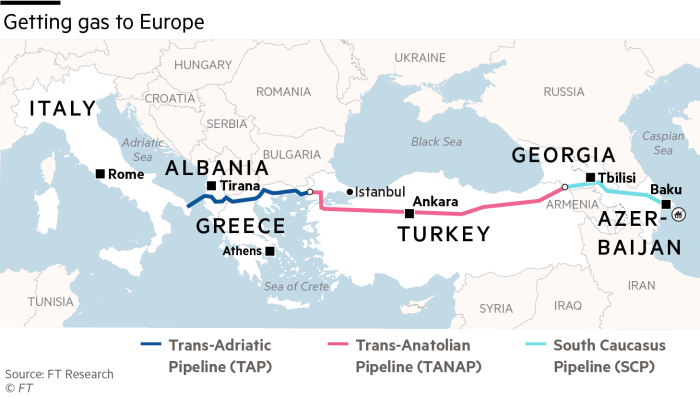The Pentagon warned Russia has amassed sufficient military assets along the Ukrainian border to launch an invasion at any moment, a build-up that has given the Kremlin a “range of options”, including an attack aimed at occupying the entire country.
The assessment, made on Friday by US defence secretary Lloyd Austin came as Russian President Vladimir Putin said Washington’s response to the Kremlin’s security demands were inadequate, raising new questions over whether the diplomatic channel to resolving the stand-off had closed.
A US defence official late on Friday told the Financial Times that Russia had now moved blood supplies close to its border with Ukraine, in a move that US military experts previously said would be another sign that Putin was moving closer to an invasion. Russia needs blood supplies to help treat troops who suffer casualties. The move was first reported by Reuters.
Taken together, the warnings from Washington and Moscow appeared to put both Nato and the Russian military closer to a war footing. Although the US and the Atlantic alliance have said they will not commit troops to Ukrainian soil if Russia attacks, some allies have been hurriedly arming the US-backed Ukrainian military.
The hardening rhetoric has spooked leaders in Kyiv, who expressed concern that the escalating brinkmanship could tip Europe into an all-out conflict. Volodymyr Zelensky, Ukraine’s president, on Friday urged the US and other western backers to tone down their sabre-rattling.
“We do understand what the risks are,” Zelensky said at a press conference, where he disputed some of the Pentagon’s assessment, saying that “we do not see a bigger escalation” than last spring when Russia’s military build-up started. “We don’t need this panic,” he added.
Despite Zelensky’s pleas, the US and the west continued to brace for war. American military planners are readying a force of 8,500 to deploy to Nato countries in eastern Europe in order to protect the alliance’s flank. General Mark Milley, the chair of the US joint chiefs of staff, noted that four Nato members bordered Ukraine and that treaty commitments meant Washington was obliged to defend them.
“I’ll be moving troops to eastern Europe and the Nato countries in the near term,” President Joe Biden said later on Friday. “Not a lot.”
Austin said that although Putin had amassed sufficient forces to mount an invasion, the US believed Russia’s president had not yet “made a final decision to use these forces against Ukraine”.
Still, the build-up has reached a point where “there are multiple options available to him, including the seizure of cities and significant territories”, Austin added.
At a Pentagon news conference, Milley agreed with the assessment. “With 100,000 troops — you’ve got combined arms formations, ground manoeuvre, artillery, rockets, you’ve got air and all the other piece parts that go with it. There’s a potential that they could launch with very, very little warning,” he said.
The US officials said the path to a diplomatic resolution remained open and urged Putin to stand down. But in a call with French President Emmanuel Macron, Putin said the US’s written response to Russia’s security demands, transmitted to Moscow earlier this week, had not addressed his biggest concern: Nato’s expansion towards Russia’s frontier.
“Attention was drawn to the fact that US and Nato answers did not take into account such fundamental Russian concerns as the prevention of Nato enlargement,” the Kremlin said in a statement, summarising Putin’s comments to Macron.
In Paris, however, a senior French official said Putin told Macron “he was not looking for confrontation”.
With diplomacy at a standstill, the US and its allies continued to steel themselves for the economic fallout of a Russian invasion. The US and the EU pledged to work together to safeguard European energy supplies should an attack result in a collapse in gas shipments to the continent.


In addition, the Biden administration has been meeting US banks to warn them of possible financial blowback from the large-scale economic sanctions Washington has vowed to trigger in the event of an invasion.
“As we’ve made clear, in addition to the significant economic and diplomatic costs Russia will incur, a move on Ukraine will accomplish the very thing Russia says it does not want — a Nato alliance strengthened and resolved,” Austin said.
The US has been in talks with gas producers such as Qatar to help supplement any European shortfall, and in a joint statement Biden and Ursula von der Leyen, the European Commission president, said they were “collaborating with governments and market operators” to ensure emergency supplies.
As part of that effort, the EU is preparing to send a delegation to Azerbaijan. Russia provides 40 per cent of the EU’s gas and officials worry Moscow could hit back against western sanctions by reducing pipeline flows.
Brussels is also in talks with some Asian countries on possible LNG swap deals, a commission official said. “What we are doing is to reach out as much as possible to any of the suppliers,” they added.
Kadri Simson, the EU’s energy commissioner, will fly to Azerbaijan early next month for talks with the country’s energy and natural resources ministers, in an attempt to drum up support for additional gas flows to Europe, an EU official said.
Fatih Birol, head of the International Energy Agency, this month said Moscow was already throttling gas supplies to Europe, pointing out Russian gas exports to Europe were down 25 per cent year on year in the last three months of 2021.
The IEA believes Russia is holding back at least one-third of the gas it could send to Europe.
Additional reporting by Polina Ivanova in Moscow, Victor Mallet in Paris, Gary Silverman in New York and Roman Olearchyk in Kyiv
Twice weekly newsletter
Energy is the world’s indispensable business and Energy Source is its newsletter. Every Tuesday and Thursday, direct to your inbox, Energy Source brings you essential news, forward-thinking analysis and insider intelligence. Sign up here.
Credit: Source link














